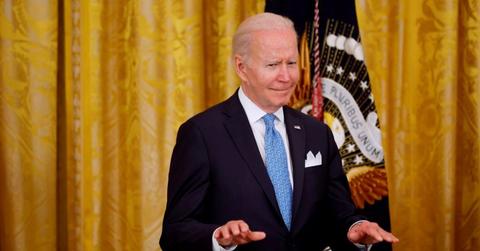Key Recession Indicators to Look Out for in 2022, Uncertainty Looms
Experts are becoming increasingly uncertain about the U.S. economy in 2022 as recession indicators loom. Here are the recession indicators to look for.
May 18 2022, Published 12:11 p.m. ET

Experts are becoming increasingly uncertain about the U.S. economy in 2022 as recession indicators loom. Factors like hiring rates, consumer spending, and industrial production can all signal a recession ahead, depending on where the data leans.
With the S&P 500 index down 16.61 percent YTD as of May 18, Americans are anxious — and even though the stock market and the economy are two different things, they aren’t mutually exclusive. It’s crucial to consider other indicators to get the full picture. Here are three recession indicators to look out for as the economy’s forthcoming fate is put to the test.
Hiring slowdowns are a top economic indicator that a recession is on the horizon.

Coinbase CEO Brian Armstrong
U.S. job openings surged in 2021, reaching 10.1 million listed positions halfway through the year. Now, many large companies appear to be reigning in the hiring process.
Crypto exchange and publicly traded company Coinbase (COIN) announced on May 16 that it would slow hiring for the foreseeable future. This is due in part to the state of cryptocurrency right now (Bitcoin is down 39.46 percent YTD), but it's also an economic signal. Coinbase president and chief operating officer Emilie Choi wrote in a note to employees, “Heading into this year, we planned to triple the size of the company. Given current market conditions, we feel it’s prudent to slow hiring and reassess our headcount needs against our highest-priority business goals.”
Other companies are slowing the hiring roll, too. Tech giants Meta (META), Uber (UBER), and Robinhood (HOOD) have all announced hiring slowdowns. Hiring across the board is still high, but shifts from these larger, high-growth operations could signal a ripple effect.
Consumer discretionary spending can also signal a recession.
Discretionary spending refers to non-essential goods and services that consumers purchase. When a recession hits, non-essential spending is the first to go. The S&P 500 Consumer Discretionary Index is a good indicator for this data.
The index is down 25.92 percent YTD as of May 18. While the index has increased a bit over the last week, its prolonged losses could suggest a forthcoming recession.
You should consider Fed data on industrial production.
The U.S. Federal Reserve created the Industrial Production Index (IPI) to measure domestic industrial production performance. An IPI score below 100 indicates poor performance. In September 2021, the IPI stood at 99.8 but has since grown nearly continuously and stands at 105.6 as of April.
Keeping tabs on the Fed’s IPI could help you spot a recession as it comes. There are different levels of a recession, and while many experts agree one is coming, the severity isn't so cut and dry. According to former Goldman Sachs CEO Lloyd Blankfein, the U.S. is at a “very, very high risk” of a recession. Meanwhile, Goldman Sachs chief economist Jan Hatzius predicts the U.S. economy will grow 2.4 percent this year and just 1.6 percent in 2023 (compared to 5.7 percent in 2021, the fastest rate since 1984).
